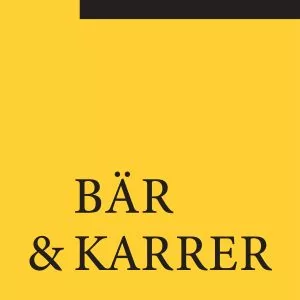- within Antitrust/Competition Law, Government and Public Sector topic(s)
Introduction
Going public may serve several goals: it may help a company gain access to a broader investor base, raise the capital it needs in order to activate its growth potential and strengthen its market position, or turn its shares into a more liquid and fungible "currency" that may facilitate acquisitions. It may also enable effective employee incentivisation and, last but not least, allow a flexible exit by existing shareholders over time.
Switzerland as a trading venue offers very attractive conditions through a combination of its strong financial centre and the stable and issuer-friendly Swiss legal and regulatory regime. On Switzerland's main and leading stock exchange, SIX Swiss Exchange, around 250 shares across all industries are traded, including some of the largest companies in Switzerland and Europe. It offers a liquid market with state-of-the-art trading conditions. Given its importance, and unless indicated otherwise, references in this contribution to listing requirements and reporting obligations refer to the standard rules set by SIX Swiss Exchange. Switzerland's second stock exchange, BX Swiss, is more focused on small and mid-size domestic issuers. As an alternative to traditional listings, SIX Group (which also owns SIX Swiss Exchange) launched SIX Digital Exchange, a fully regulated digital exchange and central securities depository. SIX Digital Exchange offers the listing and trading of tokenised equities and bonds similar to traditional stock exchanges but in tokenised form based on distributed ledger technology. In 2022, the first bonds were listed on SIX Digital Exchange.
With its listing on a stock exchange, a public company becomes subject to additional and more comprehensive regulatory requirements, stricter supervision by regulatory authorities and increased scrutiny by the public. An IPO candidate, its shareholders and its executive management are thus well advised to prepare the envisaged flotation carefully and familiarise themselves with the additional regulatory provisions and requirements, as an early and holistic preparation is key in this process.
Switzerland has generally seen strong IPO activity over the past few years, particularly prior to the COVID-19 pandemic and the Russia-Ukraine conflict. In 2022 and 2021, the following companies listed on SIX Swiss Exchange with an initial market capitalisation of more than CHF 100 million:
- EPIC Suisse AG (CHF 192 million, 2022).
- PolyPeptide Group AG (CHF 848 million, 2021).
- Montana Aerospace AG (CHF 506 million, 2021).
- medmix AG (CHF 315 million, 2021).
- SKAN Group (CHF 270 million, 2021).
The above list shows a peak in Swiss IPOs in 2021 after an earlier downturn due to the COVID-19 pandemic, achieving an issue volume of around CHF 2 billion. Following international economic trends and, in particular, the Russia-Ukraine conflict, IPO activity in 2022 declined significantly.
In addition to traditional IPOs, nine Chinese issuers listed global depository receipts ("GDRs") with a total volume of approximately USD 3.2 billion on SIX Swiss Exchange in the second half of 2022, the largest being Jiangsu Eastern Shenghong Co., Ltd. (USD 718.3 million, 2022).
Furthermore, since November 2021, the listing of special purpose acquisition companies ("SPACs") is permitted at SIX Swiss Exchange, providing an alternative to an IPO in Switzerland. SPACs may be listed under a separate listing standard introduced, providing for listing requirements tailored to the needs of SPACs and their investors. Internationally, the market for SPACs reached its climax in 2021; the listing of SPACs has since declined, and the market for SPACs in Switzerland follows the same trend. VT5 Acquisition Company AG SPAC was listed as the first SPAC on SIX Swiss Exchange in December 2021; however, there has not been an additional SPAC listed in Switzerland since.
Further, since October 2021, a company may be listed at SIX Swiss Exchange in the "Sparks" segment specifically designed for small and mid-size companies. This segment facilitates the listing and trading of such companies, giving them the opportunity to improve their financing options and access a broader investor base. Since its introduction, there has been one company (Xlife Sciences AG, 2022) listed in this segment.
The IPO process: Steps, timing and parties and market practice
The IPO process is largely driven by the characteristics of the IPO candidate itself and by the envisaged IPO structure (primary vs secondary offering, particularities such as a socalled "complex financial history"). In general, four key phases can be distinguished:
- Phase I: Preparation (approximately
four to six months prior to the first day of trading) The
shareholders and the issuer, together with their advisors, set up
the structure, make strategic decisions for the offering, and
implement the IPO-readiness of the issuer:
- Selection of advisors: The issuer chooses its advisers, including, in particular, the underwriting banks, the legal advisors to both the issuer and the underwriters, the auditors, and often a pre-IPO advisor. In larger IPOs offered internationally, the issuer and the underwriters are each advised by two law firms: a Swiss law firm; and international counsel, whose task is to ensure compliance with international and U.S. securities laws (which may be necessary to allow re-sales into the U.S. market, such as under a Rule 144A offering). Depending on the IPO structure, a selling shareholder might also engage separate counsel. Most often, the issuer appoints further advisors, such as a specialised PR firm.
- Structuring: The underwriting banks and legal advisors advise the issuer and its current shareholders on the structuring and, in particular, whether it should be structured as a primary offering (sale of newly created shares) or secondary offering (sale of existing shares only), or a combination of both. They also advise on the listing venue and the review body to be chosen. In case of a foreign issuer, the structuring involves the decision as to whether the issuer should list its shares on SIX Swiss Exchange or whether it should migrate to Switzerland for the IPO. This decision is typically driven by marketing and/or tax considerations. Structuring may also include the reorganisation of a group, e.g., the establishment of a holding company.
- Development of equity story: Together with the issuer, the underwriters develop an equity story to market the shares. A key element is the confidential meetings between the issuer and potential investors to test the waters (so-called "pilot fishing" or "early-look meetings"). In case the issuer has publicly traded debt outstanding (in particular, high-yield bonds), these meetings must comply with the relevant requirements regarding disclosure of price-relevant information; in particular, under the European Market Abuse Regulation ("MAR"), if the bonds are traded at an EU venue. The development of the equity story leads to the issuer presenting itself to the underwriters' analysts, following which the analysts prepare and publish research reports for the investors to attract their attention. These reports are key elements of the marketing strategy.
- Corporate governance: One of the main tasks of the issuer's Swiss legal counsel is advising the issuer on its corporate governance set-up and preparing the necessary corporate documentation. If the issuer has issued several classes of shares, any preferred share classes will typically be converted into common shares prior to listing, as different share classes may adversely impact the liquidity of the listed shares and be viewed negatively under good corporate governance standards. Other corporate governance measures include the adoption of mandatory Swiss "say-on-pay" rules ("SOP Rules") (see below) and amending the constitutional documents to ensure compliance with applicable Swiss law, as well as best practice for public companies. Existing shareholders often appoint new members to the board of directors as of the first day of trading. It is advisable to give due consideration to the recent guidelines published by the prominent proxy advisors and the Swiss standards for corporate governance, which recommend a sufficient number of independent board members. Under certain circumstances, issuers may also consider increasing the threshold for mandatory takeover bids from 33⅓% to 49% (opting up), or completely opting out of the mandatory takeover regime, which, however, is typically perceived negatively by investors.
To view the full article click here
Originally Published by Global Legal Insights (GLI)
The content of this article is intended to provide a general guide to the subject matter. Specialist advice should be sought about your specific circumstances.
[View Source]



